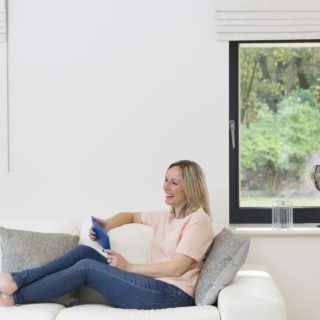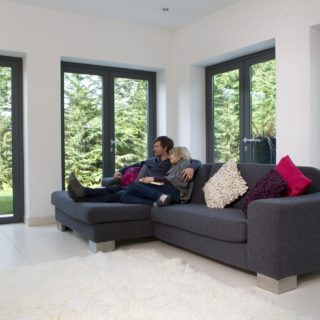Solar control glass
Advantages of solar control glass:
- High light transmission.
- Low solar energy permeability.
- Excellent thermal insulation.
- Significant contribution to reduced heat consumption.
- Multiple variants with different levels of light transmission and reflection.
- Available in hardened or laminated glass version.
- Available harmonising spandrels for inter-window strips.
- Other types of glass may be used, which allows for customising the properties of combined window panes to individual needs.
How it works?
In practice, low-emission glass reflects energy back into the building, which means that heat loss is much lower than with ordinary float glass. In addition, different types of low-emission glass allow for passive gain of different amounts of solar energy, which reduces heating requirements and heating cost, especially in the colder months.
Solar energy penetrates the building mainly as high-temperature short-wave radiation, but when it comes inside, it is reflected by the objects back towards the glass as low-temperature long-wave radiation.
Low-emission glass is covered with a coating that enables penetration of short-wave solar radiation to a much greater extent than long-wave radiation (coming from heaters and objects existing in the room), establishing an effective barrier for heat loss. In order to maximise energy efficiency throughout the year, often the optimum solution is to combine solar protection and low emissivity parameters.




